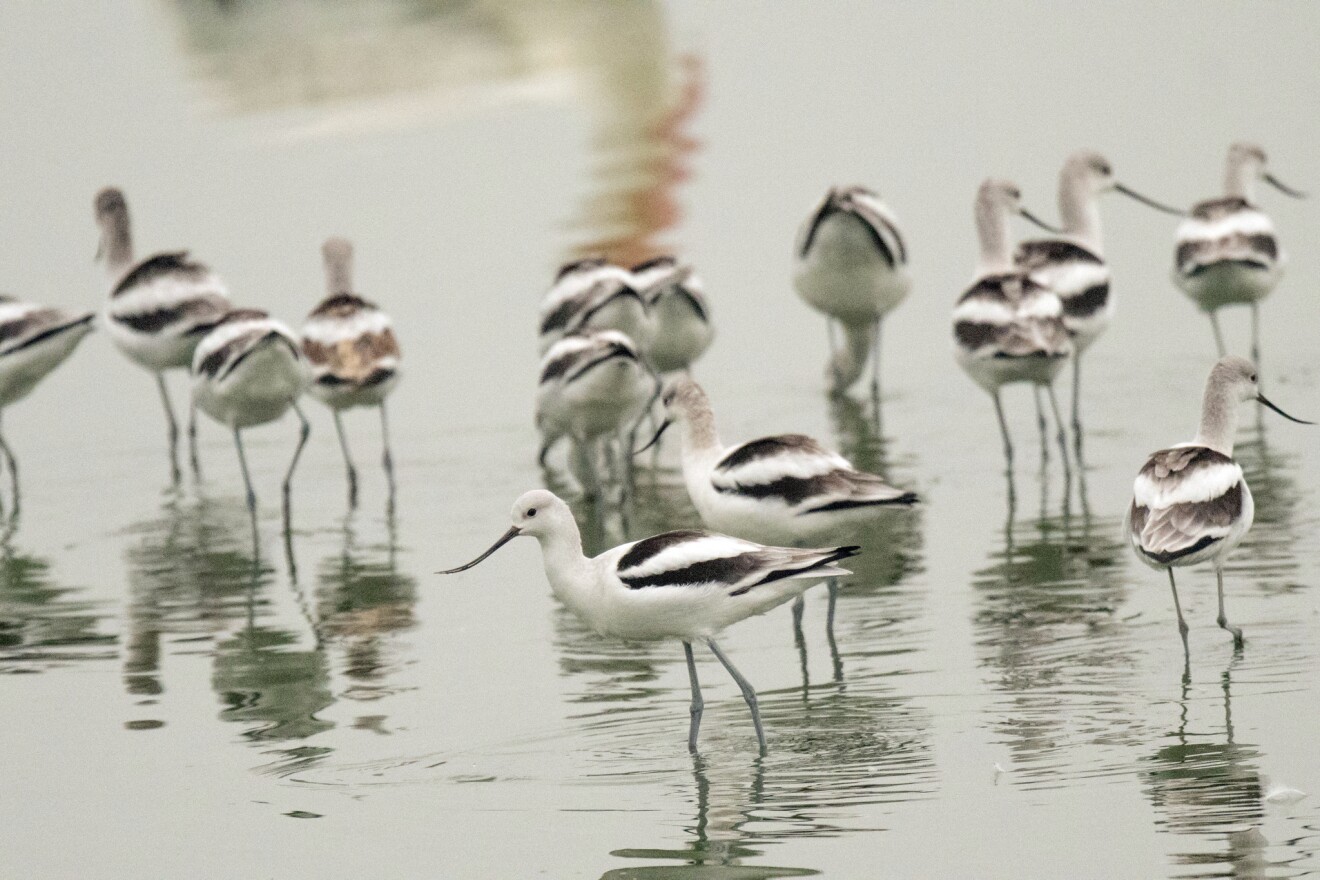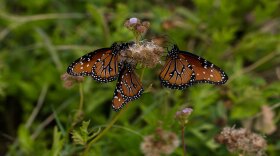If you're looking for a new hobby this summer, here's an idea. It's something that gets you out of the house and into the fresh air. It demands concentration and rewards you with beauty. Welcome to the world of birding.
Ron Huebner stood in a hotel lobby as he took a break from a recent meeting of the Texas Ornithological Society in San Antonio. He wore a camo outfit that might've made him look out of place at any other hotel conference, but at this particular event, among fellow birders, he blended right in.
He admitted that birds are his passion.
“I guess as a kid I used to hang around the Brazos Valley," he explained. "The bird that got me going was the scissor-tail flycatcher because when you see them up close they are really just full of color.”
That was his "spark bird." Birders have their own lingo, and a spark bird is that one bird that ignites a passion that stays with you for the rest of your life.
Huebner saw it when he was a child, near College Station, and he was never the same.
He said the scissor-tail flycatcher is not only beautiful -- it's also graceful. “They’ll go high in the air and come flying down and twirl around. It’s like a little ballet.”

He loves making lists of the birds he sees -- a common practice among his colleagues. He calls it an “affliction.”
“You can have a list for each individual county," he said. "How many birds have I seen on this county? How many birds have I seen in this county for the year?' It’s ad nauseam. It can go on and on, and so you make your own challenge and you set your own goal and then you try to beat your own goal every year.”
But, he explained, these special lists come with special rules: “The rules for the lists are for you to decide. Some people will only count birds they see.”
Huebner is a native Texan who lives in Oklahoma. He's enjoyed plenty of birdwatching excursions in both states, steadily walking down trails and listening for bird calls.
But, he said, not all birders stroll -- some actually run.
"They’ll go chase after [the bird calls], through brush, over creeks ... climbing trees -- I mean, whatever it takes to see the bird, and they can add it to their lists. ... [I]t’s all the honor system. Nobody is going to challenge you as to what you saw.”
BIRDING JARGON
If you're inspired to begin birding, you better learn the jargon. Here are a few of our favorite words to get you started. The words and definitions are from Audubon.org, where you can see the entire list.
1. Lifer: A first-time sighting for a birder
2. Twitcher: A hard-core birder who goes to great lengths to see a species and add it to his or her list
3. Nemesis bird: A species that constantly eludes a birder
4. Vagrant: Straying well outside of the regular ecological range
5. Butterbutt: An endearing term for a Yellow-rumped Warbler
Huebner said some birders try special bird calls to draw out birds. He says they also use a pishing call. "Pishing" is a sound birds often make when they are disturbed by something they see, like a snake or a hawk.
“These little pishes ... it just gets the birds' attention." He demonstrated the sounds.
Huebner said sightings aren’t the only items that go down in a birder's journal.

“You know, when do they arrive. It’s always something different. They come it at different times each year. They act differently ... depending on the weather. They do different stuff, so ... you can do it anywhere you’re at.”
In the age of the smartphone -- specifically an age where people's faces are always planted in their smartphones -- wouldn't we see a hobby like birding fading away?
Huebner said not at all -- far from it. In fact, younger generations love it.
“It’s growing, and social media has a lot to do with that. A lot of kids are ... it's kind of like game playing. [Y]ou got a whole series of people who do listings.”
South Texas is a great spot for birding. Yvette Stewart with the Mitchell Lake Audubon Center explained there are at least 250 different kinds of birds to spot in Bexar County. South Texas also sits under a major route many birds follow as they migrate between Mexico and Canada.
For novices inspired to become birders or for experts looking for their next excursion, the Mitchell Lake is a good spot for birding. The Center's personnel also recommend Crescent Bend Nature Park in Schertz, Braunig Lake, the Medina River Natural Area, the Greenline Park on Sydney Brooks, Brackenridge Park, Government Canyon State Park, and Friedrich Wilderness Park.

There are always events for birders to enjoy. For example, on Sat., May 11, the Mitchell Lake Audubon Center hosts a Migratory Bird Fest. Visitors can watch a live birds-of-prey demonstration, learn birdbox building, view bird artwork and tour a native plant sale from 9 a.m. to 2 p.m.
Huebner smiled as he sat in the hotel lobby, waiting for the next conference session to begin. He and some colleagues might walk later in the day, listen for some bird songs and maybe update their lists.
Huebner said he was proud to be a birder. There’s something silly about it. It’s fun. It’s simple.
“Come on, let’s face it," he said, "it’s a nerdfest, and so you have to celebrate your nerdiness -- there’s just nothing else to say about it.”
Brian Kirkpatrick can be reached at Brian@TPR.org and on Twitter at @TPRBrian.
Copyright 2020 Texas Public Radio. To see more, visit Texas Public Radio. 9(MDAxODQzOTgwMDEyMTcyNjI4MTAxYWQyMw004))













